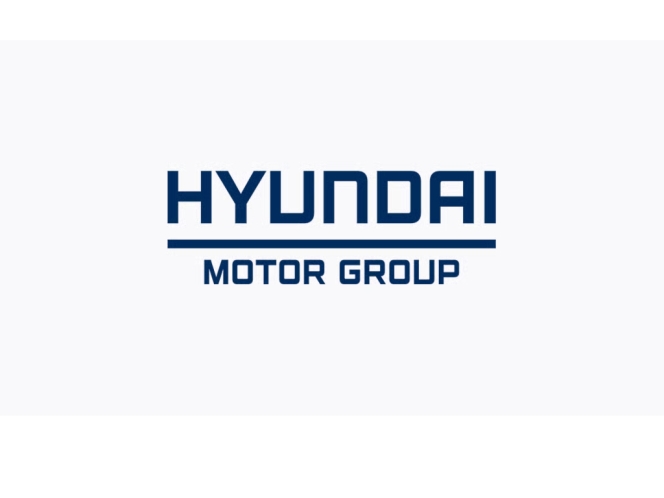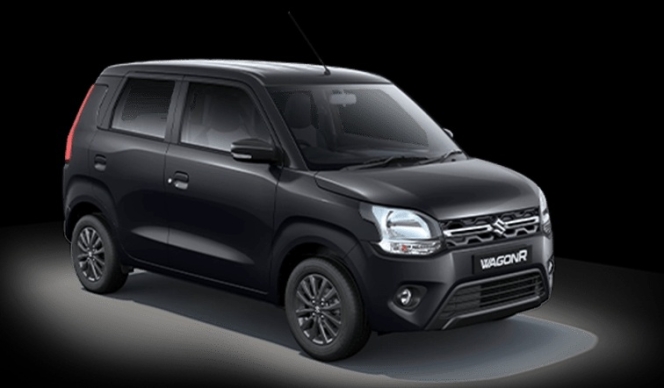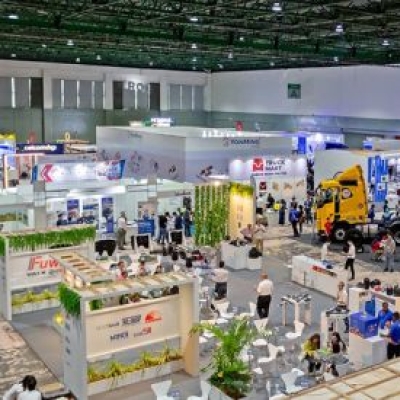Optimised Bacalar W12 Engine Delivers Improved Power, Torque
- By T Murrali
- April 11, 2021

The Bacalar spearheads a return to coachbuilding by Bentley Mulliner and features an enhanced version of Bentley’s peerless 6.0-litre W12 TSI engine, the most advanced 12-cylinder engine in the world.
Since the first introduction of the twin-turbocharger W12 in 2003, the engine’s refinement has seen an increase of up to 27 percent in power, 38 percent in torque and a reduction of 38 percent in emissions.
This has been realised through the evolution and optimisation of the crankcase, improvements in the oil and cooling systems, twin-scroll turbocharging technology and more effective injection and combustion processes.

Sources from Bentley told this correspondent that these improvements resulted from several initiatives taken by the company. It may be recalled that the latest generation of W12 was launched in the Bentayga in 2016. “A thoroughly reworked engine included a crankcase 30 percent stronger than its predecessor, while the cylinder surfaces were coated to reduce friction and improve corrosion resistance. A low-alloy steel coating is applied to the bores using an Atmospheric Plasma Spray (APS) process. Improvements were also made to the cooling system, with the engine featuring three separate coolant circuits. The first is designed to bring the cylinder heads up to optimum operating temperature as quickly as possible for best engine performance and low emissions. The second cool the engine block and oil system, while the third handles the turbochargers’ thermal load. Each system has a dedicated water pump, allowing optimised individual control,” sources said.
Twin-scroll Turbocharging
Twin-scroll turbochargers minimise turbo response time and provide a more efficient exhaust package. The exhaust assemblies for the three front and three rear cylinders are separate from one another, which feed the twin-scroll impellers. The turbocharger housing is welded directly to the exhaust manifolds and feature integrated speed sensors, allowing the engine to monitor turbo performance for maximum efficiency.
Effective Injection
The W12 combines high-pressure direct fuel injection (200 bar injection pressure) with low-pressure port injection (six bar). The combination of these two systems maximises refinement, lowers particulate emissions and optimises power and torque delivery.
Interestingly, each W12 engine is hand-built over 6.5 hours by a team of 45 craftspeople before undertaking a highly sophisticated test regime of over an hour via three specialist diagnostic machines during the engines assemble.
According to the sources, there were three specialist diagnostic machines with sophisticated test regime.
 Leak Test
Leak Test
The leakage test is conducted by pressurising each of the systems for fuel, oil and water individually. The different cavities are pressurised to values between 0.2 – 5.0 bar respectively and then measured whilst the pressure decays over time. The reduction in pressure versus time represents the quality of the sealing of the engine assembly. If the pressure drops faster than expected, a leak is indicated. A special fluid is sprayed on to the exterior of the engine to pin-point any leakage paths.
Cold Test
The engine is loaded on to a testbed plate, and connections are made to the engine loom and all engine systems, whilst a large electric motor couples to the engine via the crankshaft. “Motoring” the engine via the crankshaft allows the testbed to collect data from a suite of sensors. The facility measures 600 individual properties and characteristics of the engine during a 15-minute cycle. Due to the low running speed of 120 RPM for the test, finer details and any inconsistencies can be identified thanks to a sample rate that highlights even the briefest of anomalies that would be invisible if the engine was firing or running at speed. This fine detail analysis is also valuable for confirming the precise timing of the engine. Using positioning information from sensors on the crankshaft, crankcase and camshafts, and cylinder compression values, the Cold Test can confirm the engine timing is accurate and, therefore, achieve the best possible combustion cycle.
 Hot Test
Hot Test
When the engine arrives for hot testing, a UV dye is added to the engine to help identify any leaks. The coolant and fuel system are pressurised with air and nitrogen, respectively, for a final check before introducing the necessary fluids ready for testing. The engine is cranked to build oil pressure before the ignition system is energised and then left to idle whilst the engine test technician listens for any refinement issues and checks for leaks with a UV lamp. Sources said that each W12 is then tested for a minimum of 21.5 minutes and runs up to 3,800 rpm with a maximum load of 300 Nm. One in every one hundred engines receives a full eight-hour power test, achieving 6,000 RPM, and must achieve 900Nm.
The three tests that the Bacalar engine has already been put through are part of Bentley’s exceptional quality control processes. These testing procedures provide feedback on the quality of each engine and provide multiple checkpoints to catalogue the exact behaviour of each engine from the moment of manufacture. Since the installation of the three testbeds in 2002, over 100,000 W12 engines have been handcrafted in Crewe and passed through the test facility.
Technology Advancements
Bentley’s legendary 6.0-litre twin-turbocharged W12, created in 2002, has evolved into the latest iteration of the W12 engine used across today’s current model range. The unique W-configuration means that the engine is 24 percent shorter than an equivalent V12, benefitting packaging and maximising usable cabin space.
The latest generation of W12 was launched in the Bentayga in 2016. A thoroughly reworked engine included a crankcase 30 percent stronger than its predecessor, while the cylinder surfaces were coated to reduce friction and improve corrosion resistance. A low-alloy steel coating is applied to the bores using an Atmospheric Plasma Spray (APS) process.
 The W12 combines high-pressure direct fuel injection (200 bar injection pressure) with low-pressure port injection (six bar). The combination of these two systems maximises refinement, lowers particulate emissions and optimises power and torque delivery.
The W12 combines high-pressure direct fuel injection (200 bar injection pressure) with low-pressure port injection (six bar). The combination of these two systems maximises refinement, lowers particulate emissions and optimises power and torque delivery.
Twin-scroll turbochargers minimise turbo response time and provide a more efficient exhaust package. The exhaust assemblies for the three front and three rear cylinders are separate from one another, which then feed the twin-scroll impellers. The turbocharger housing is welded directly to the exhaust manifolds and feature integrated speed sensors, allowing the engine to monitor turbo performance for maximum efficiency.
Bentley’s variable displacement system shuts down half of the engine under defined conditions. Intake and exhaust valves, fuel injection and ignition are all shut down on defined cylinders, with the engine running as a six-cylinder for improved efficiency. The system will run in this mode in gears three to eight, below 3,000 rpm and up to 300 Nm torque output.
The first Bacalar engine followed the same build process in Bentley’s centre of excellence for W12 engines, ensuring the same level of quality and expertise before final testing, sources added. (MT)
Sustainable, Recyclable Electric Motors
Bentley Motors has announced a three-year research study that aims to revolutionise the sustainability of electric motors. Supporting Bentley’s commitment to offering only hybrid or electric vehicles by 2026, the result could see recycled rare-earth magnets used in selected ancillary motors for the very first time.
The study, titled RaRE (Rare-earth Recycling for E-machines), intends to build on work completed at the University of Birmingham in devising a method of extracting magnets from waste electronics. The project will also scale up this process and repurpose the extracted magnetic material into new recyclable magnets for use within bespoke ancillary motors.
Adding to the sustainability benefits that RaRE will provide, the bespoke motors created through this method promise to minimise complexity through manufacture while supporting the development of the UK supply chain for both mass production and low volume components.
Dr Matthias Rabe, Member of the Board for Engineering, Bentley Motors, said, “As we accelerate our journey to electrification, offering only hybrid or electric vehicles by 2026, and full electric by 2030, it is important that we focus on every aspect of vehicle sustainability, including sustainable methods of sourcing materials and components. RaRE promises a step-change in electrical recyclability, providing a source of truly bespoke, low voltage motors for a number of different applications, and we are confident the results will provide a basis for fully sustainable electric drives.”
This study will run in parallel to Bentley’s OCTOPUS research programme, which aims to deliver a breakthrough in e-axle electric powertrains, utilising a fully integrated, free from rare-earth magnet e-axle that supports electric vehicle architectures.
As with OCTOPUS, RaRE is an OZEV funded project delivered in partnership with Innovate UK, which brings together the following partners with distinct roles and responsibilities. Bentley Motors will lead specification setting and test protocol development and support the design and manufacturing activities, while Hypromag will scale up the recycling processes developed at the University of Birmingham and convert the extracted powders to sintered magnets with properties designed around those required for the auxiliary motors. On its part, Unipart Powertrain Applications Ltd will lead the development of manufacturing scale-up routes to ensure facilities and processes defined are suitable for volume automotive manufacture.
Advanced Electric Machines Research Ltd will lead the motors’ design and development, while Intelligent Lifecycle Solutions Ltd will pre-process computer hard disk drives to remove the rare earth magnet containing components from the waste, which will be shipped to Hypromag for removal of the rare earth magnets. The University of Birmingham will provide cast alloys, which will be fed into Hypromag to blend with secondary materials to produce sintered magnets. (MT)
Maruti Suzuki Celerio Scores 3 Star In Global NCAP Rating, Ciaz Gets 1 Star
- By MT Bureau
- December 22, 2025

Global NCAP, the automotive safety watchdog, has announced the latest results for its #SaferCarsForIndia campaign, with two models from Maruti Suzuki India, the country's largest passenger vehicle manufacturer, receiving mixed results.
The latest crash test result saw Global NCAP awarding the Maruti Suzuki Celerio a three-star rating for adult occupant protection following the inclusion of six airbags as standard. A previous version of the vehicle, equipped with two airbags, had received two stars for adult occupant safety and one star for child protection.
The technical evaluations of the six-airbag Celerio indicated protection levels ranging from good to marginal. The assessment noted that both the footwell and the bodyshell were unstable. Tests also showed exposure of children’s heads during front and side impacts.
On the other hand, the company’s popular sedan model the Maruti Suzuki Ciaz received a 1-star rating in the same assessment. The report for this model highlighted:
- The absence of side head protection.
- An unstable footwell and bodyshell.
- A lack of three-point seatbelts in all seating positions.
In contrast, Global NCAP reported that the new Dzire and Victoris models achieved five-star ratings.
Richard Woods, Chief Executive Officer of Global NCAP, said, “We are encouraged that Maruti Suzuki is committed to improving safety with five star performance for new models like the Dzire and Victoris, it remains disappointing however that some legacy models fall short.”
The results follow a commitment from Maruti Suzuki to increase safety standards across its future vehicle range.
CARS24 Appoints Divanshu Saxena As CBO Of Financial Services Arm
- By MT Bureau
- December 22, 2025

CARS24 has announced the promotion of Divanshu Saxena to Chief Business Officer (CBO) of its NBFC arm, CARS24 Financial Services.
In his new role, Saxena will oversee the strategy, growth and execution of the financial services division. His responsibilities include scaling lending operations, managing risk and maintaining profitability as the company develops its financial services platform.
Saxena previously managed the consumer financing business for LOANS24. During his tenure, the division recorded growth in finance penetration and contributions from non-retail lending. The company noted that his work focused on unit economics and portfolio quality.
Ruchit Agarwal, Co-Founder & Group CFO, CARS24, said, “Divanshu has played a pivotal role in building CARS24 Financial Services into a strong and institutionally sound business. His disciplined approach to growth, deep understanding of lending economics, and consistent execution have laid a solid foundation for scale. We are proud to elevate leaders from within, and as CBO, Divanshu will be central to shaping the next phase of growth for LOANS24.”
Before joining CARS24, Saxena served as a Project Leader at Boston Consulting Group (BCG) within the Financial Services and Industrial Goods practice. He is an alumnus of IIM Calcutta, where he graduated with a silver medal, and Shri Ram College of Commerce (SRCC), University of Delhi.
Divanshu Saxena said, “Building LOANS24 has been about creating a lending business that balances speed with discipline and growth with resilience. As CBO, my focus will be on scaling responsibly, strengthening our fundamentals, and continuing to build a financial services platform that earns long-term trust from customers and partners.”
Hyundai Motor Group Announces Executive Appointments For 2026
- By MT Bureau
- December 19, 2025

South Korean auto major Hyundai Motor Group has announced executive appointments effective from 1st January 2026. The changes focus on the transition to software-defined vehicles (SDV) and the development of manufacturing technology.
In total, 219 executives have been promoted across the Group, comprising four Presidents, 14 Executive Vice Presidents, 25 Senior Vice-Presidents and 176 Vice Presidents. Approximately 30 percent of these promotions are within R&D and technology sectors.
Manfred Harrer has been promoted to President and Head of the R&D Division. Since joining in 2024, Harrer has managed vehicle development. His new role focuses on SDV competitiveness and development projects.
Juncheul Jung is promoted to President. Jung currently manages the Manufacturing Solutions and Procurement Divisions. His remit involves the Group's Software-Defined Factory (SDF) approach and the integration of robotics into production systems.
Yeong Il Choi becomes Executive Vice President and Head of Domestic Production. Choi also takes the role of Chief Safety Officer (CSO) for production facilities in South Korea.
The company also announced revamping leadership positions in its regional business, where it has appointed Seung Kyu Yoon as President of Kia North America Operations, Bo-Ryong Lee as President and CEO of Hyundai Steel Operations, Gang Hyun Seo as Head of Corporate Planning, Affiliate Business Optimisation, Sungwon Jee as Executive Vice-President, Hyundai Brand Marketing and Yongseok Shin as Executive Vice-President of HMG Business Intelligence Institute.
Hyundai Motor Group has internalised technologies including the 'Pleos Connect' infotainment system and 'Atria AI' for autonomous driving. Appointments in engineering include Jeonghun Seo in Battery Engineering and Duckhwan Kim in Hydrogen and Fuel Cell Engineering.
Jaehoon Chang, Vice Chair, continues to oversee the direction for mobility, hydrogen energy and robotics. Within the financial sector, Chang Hyun Cho (Hyundai Card) and Si Woo Jeon (Hyundai Commercial) have been promoted to Executive Vice-President.
"The appointments are intended to strengthen organisational resilience and expand the leadership pipeline across functions. In addition, the appointments reflect the Group’s commitment to turning global uncertainties into opportunities for renewal and growth. It will continue to advance bold leadership transformation and secure strong competitiveness in the SDV era," the company said.
Maruti Suzuki India’s WagonR Surpasses 3.5 Million Units Production Milestone
- By MT Bureau
- December 18, 2025

Maruti Suzuki India has attained a production milestone of 3.5 million units for the popular hatchback the WagonR.
The model, which spans three generations, was first launched in India in December 1999 and is currently manufactured at the company's facilities in Gurgaon and Manesar, Haryana.
The WagonR joins the Alto and Swift as models within the Maruti Suzuki portfolio to reach this volume. Globally, the Suzuki WagonR was first introduced in Japan in September 1993 and is now sold in over 75 countries. In August 2025, the model reached 100 million units in cumulative global sales.
The current WagonR is built on the fifth-generation Heartect platform. Standard safety features include six airbags, Anti-lock Braking System (ABS) with Electronic Brakeforce Distribution (EBD) and Electronic Stability Program (ESP).
On the inside, it comes with a 7-inch touchscreen infotainment system. Connectivity via Apple CarPlay and Android Auto. Bluetooth and voice command functionality.
The vehicle has been the highest-selling car in India for the previous four financial years.
Hisashi Takeuchi, Managing Director & CEO, Maruti Suzuki India, said, “This achievement is not just a production milestone, but reflects the enduring love and confidence that generations of customers have shown towards brand WagonR. It is rare for a vehicle to receive such acceptance even after 25 years since its launch. The WagonR kept evolving with the introduction of new technology and features over time, while retaining its original DNA. The WagonR has been highly appreciated for aspects like its iconic tall-boy design, spacious interiors and fuel efficiency, which aptly reflect our customers’ needs and expectations. We are deeply grateful for their continued support and remain committed to providing ‘Joy of Mobility’ for generations to come.”






Comments (0)
ADD COMMENT